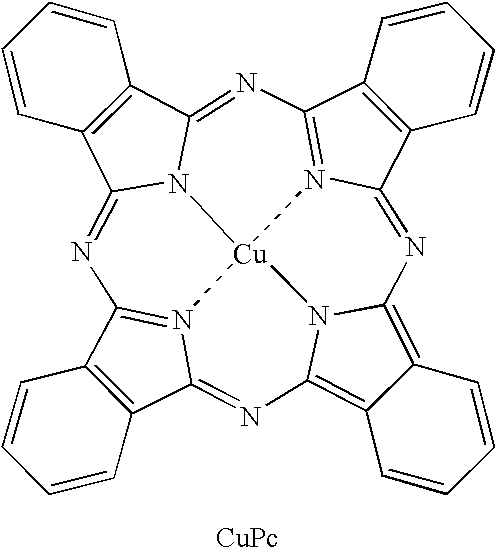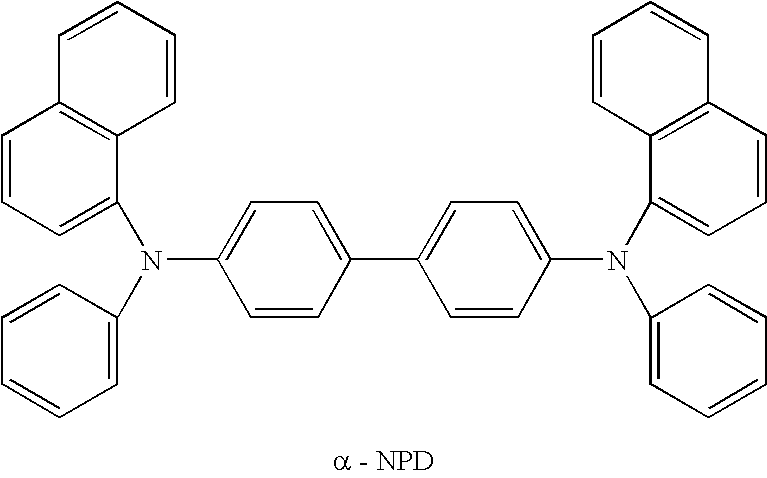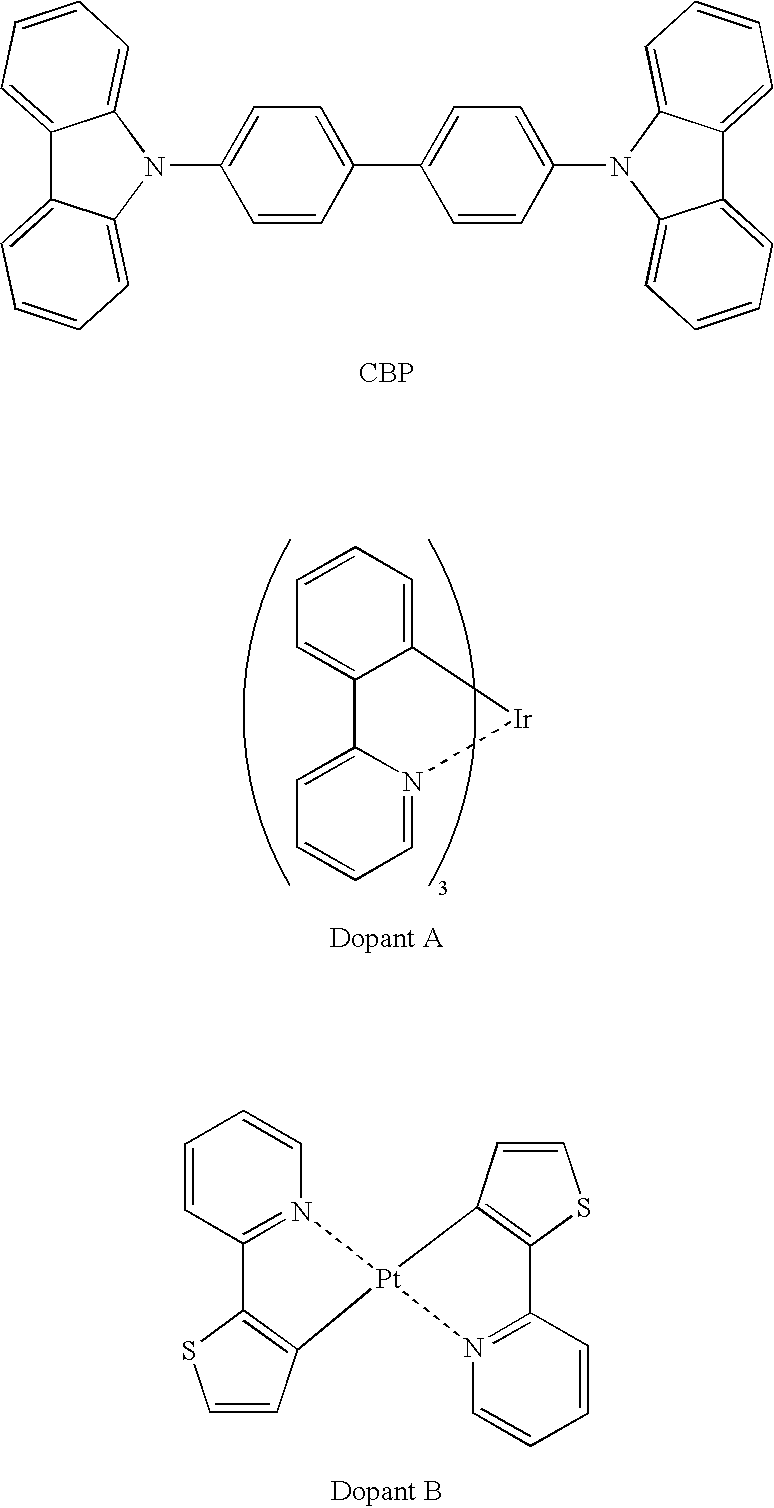Organic electroluminescent element and display device using the same
a technology of electroluminescent elements and display devices, applied in the direction of discharge tube luminescnet screens, other domestic articles, natural mineral layered products, etc., can solve the problems of significant durability degradation, and achieve the effect of improving durability and consuming a large amount of energy
- Summary
- Abstract
- Description
- Claims
- Application Information
AI Technical Summary
Benefits of technology
Problems solved by technology
Method used
Image
Examples
example 1
[0102] On a glass substrate having a transparent conductive film of indium.tin oxide (ITO) deposited thereon to a thickness of 150 nm (manufactured by Geomatech), an anode was formed by performing patterning via photolithography and hydrochloric acid etching. The pattern-formed ITO substrate was subjected to ultrasonic cleaning in acetone, washing with pure water and ultrasonic cleaning in isopropyl alcohol in the described order, then to drying by nitrogen blowing and finally to ultraviolet ozone cleaning. The thus treated substrate was placed in a vacuum deposition apparatus. Subsequently, a vacuum was drawn until the degree of vacuum in the deposition apparatus was lowered to 2.7×10−4 Pa or less.
[0103] Subsequently, copper phthalocyanine (CuPc) represented below was heated in the deposition apparatus, and deposition was carried out at a deposition rate of 0.1 nm / sec, to form a hole injecting layer having a thickness of 10 nm.
[0104] Next, on the thus formed hole injecting layer...
example 2
[0119] An organic EL element was prepared in the same manner as in Example 1, except that the thickness of the hole transport layer as formed in Example 1 was changed to 25 nm, and the same measurements were carried out as in Example 1.
[0120] The maximum wavelength of the luminescence spectrum of the element that was obtained according to Example 2 was 583 nm, which was identified to be derived from the dopant B.
example 3
[0121] An organic EL element was prepared in the same manner as in Example 1, except that the thickness of the hole transport layer as formed in Example 1 was changed to 10 nm, and the same measurements were carried out as in Example 1. The maximum wavelength of the luminescence spectrum of the element that was obtained according to Example 3 was 584 nm, which was identified to be derived from the dopant B.
PUM
| Property | Measurement | Unit |
|---|---|---|
| thickness | aaaaa | aaaaa |
| ionization potential | aaaaa | aaaaa |
| thickness | aaaaa | aaaaa |
Abstract
Description
Claims
Application Information
 Login to View More
Login to View More - R&D
- Intellectual Property
- Life Sciences
- Materials
- Tech Scout
- Unparalleled Data Quality
- Higher Quality Content
- 60% Fewer Hallucinations
Browse by: Latest US Patents, China's latest patents, Technical Efficacy Thesaurus, Application Domain, Technology Topic, Popular Technical Reports.
© 2025 PatSnap. All rights reserved.Legal|Privacy policy|Modern Slavery Act Transparency Statement|Sitemap|About US| Contact US: help@patsnap.com



